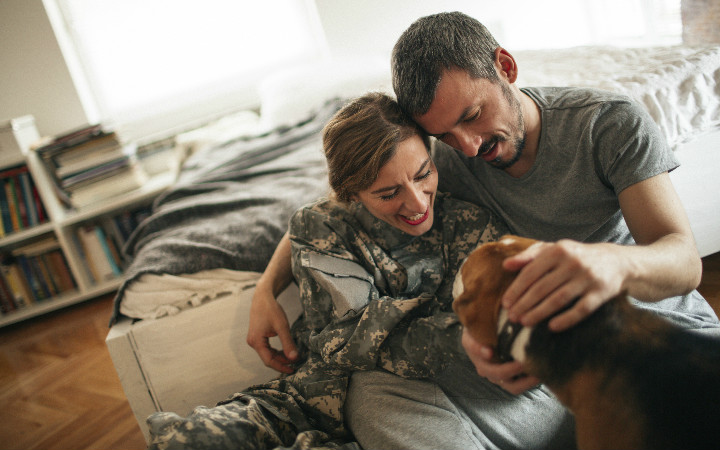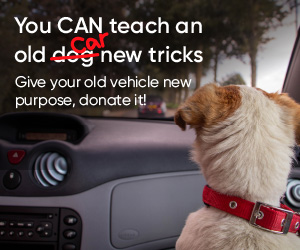Pet fostering provides temporary care to animals in a home environment prior to their adoption or reunion with their guardians. Animal shelters use fostering for a range of purposes, including care for vulnerable animals and expanding shelter capacity.
But fostering helps people who are temporarily unable to care for their pets, as well – due to military obligations, personal hardships, or natural disasters.
How pet fostering helps animal shelters
Animal welfare organizations rely on foster homes for a variety of reasons:
- Puppies and kittens can be weaned in a calm, supportive environment
- Nursing cats and dogs are able to nurture their litters in peace
- Ill, injured, disabled, and special needs animals, and those recovering from surgery or cruelty, can convalesce in a home setting
- Dogs in need of socialization can improve their adoption potential, including those who were victims of hoarding, neglect, or other cruelty
- Animals who are highly stressed in the shelter, particularly older dogs and cats, can avoid negative behaviors most associated with kennel stress
- Animals are given safe harbor from natural or other disaster while they await reunion with their families
Animal shelters benefit when they have a robust network of fosters.
Foster homes increase a shelter’s overall capacity to care for homeless animals. For every pet in foster a spot is available at the shelter to take in another animal in need.
And foster parents give shelters valuable insights into an animals’ personality, temperament, skills, and other vital details to facilitate their adoptions.
Animal welfare and fostering organizations try to match dogs and cats with homes that best fit the needs of both the pet and the foster’s lifestyle. Experts typically recommend keeping resident and foster pets apart to minimize potential disharmony.
However, many experienced fosters strike a balance between separation and socialization. For example, they may walk their own dogs with their fosters pack-style, but separate them for meals and sleeping.
How pet fostering helps people
People coping with medical emergencies, hospitalization, or natural disasters rely on fosters until they are able to be reunited with their pets.
Military personnel use fosters to secure their pets’ care during absences due to training exercises and deployment.
Fostering is the most responsible and humane alternative to surrendering pets to shelters. And it allows service members to be reunited with their pets upon completion of their military obligations.
Organizations that assist active duty military typically offer both short- and long-term foster care, often for up to one year.
But pet fostering helps people who choose to be fosters, as well. Some people foster if they are unable to commit to adopting a pet for life, yet want to help animals in need. Fostering allows them to enjoy many of the benefits of having a companion pet of their own without the long term commitment.
And individuals who choose to become pet fosters enjoy the satisfaction of helping animals on their journeys to permanent homes.
Is pet fostering right for you?
Many organizations provide their fosters with training, and any information they have about a pet’s medical, training, and other needs. They are given essential supplies, such as food and access to veterinary care for fostered pets.
Pet fosters must remember that they are a vital, but temporary guardian to a dog or cat in need.
Most shelters and rescues require fosters to make the fostered pets available for adoption events in their communities. After all, the ultimate goal of foster care is to serve as a nurturing bridge to a permanent home.
What it takes to be a pet foster
Every adoption organization has its own pet fostering policies and criteria.
At minimum, volunteer fosters need the cooperation of their families. They should have flexibility, patience, a compassionate nature, and some knowledge of animal behavior.
Ideally fosters have direct experience with the species of animal – dog or cat – they would like to foster.
Individuals must apply at their local shelter or rescue, and will likely need to attend training.
The sponsoring organization may conduct a home visit prior to a first-time foster receiving an animal. Nearly all require an individual’s own companion pets be up-to-date on vaccinations, and be fixed (spayed/neutered).
If there are resident pets in the foster’s home they should be pet-friendly as well.
Foster parents typically must be at least 18 years of age, and either own their home or have permission from their landlords to have pets.
What is a foster failure?
Sometimes volunteer fosters becomes so attached to the animals in their charge that they choose to adopt them. This is known as a ‘foster failure’ because the capacity of that foster to care for other ‘temporary’ pets is diminished by one.
If a foster can have only one pet at home, adopting an animal effectively ends his or her availability to foster other animals.
When fosters care for dogs and cats for an extended period of time it is natural that strong bonds develop. Sometimes this leads to foster failure.
When to think about becoming a pet foster
There are many reasons to become a foster parent to a shelter dog or cat in need:
- Privilege of offering animals a safe and supportive environment while they await adoption
- Helping pets – and their people – displaced due to emergency, natural disaster, or military obligations
- Improving pets’ adoption potential through socialization and learning how to live in a home
- Reducing animals’ stress, which makes them more likely to be adopted
- Enjoying many benefits of pet guardianship even if you are unable to keep a full-time pet due to lifestyle or other reasons
While fosters often get attached to their charges, most ‘give up’ the pet to adoption because they recognize it is in the best long-term interests of the animal to have a permanent home.
Pet fostering resources
If you are a good fit to foster, contact your local shelter, SPCA, humane society, or animal control. You can search the Petfinder database for animal welfare organizations in your area.
If you would like to foster a pet for a service member or military veteran – or are a service member or veteran who needs foster care for your personal pet:
- Dogs on Deployment is an online resource founded by an military couple. The organization facilitates an online community to arrange fosters for deployment, family illness or any other circumstance that renders a service member or veteran temporarily unable to care for a pet.
- PACT for Animals gives peace of mind to active duty military, veterans, and individuals facing emergency medical needs by offering short- and long-term foster of their pets.
Pet fostering is a great way to give an extra chance to an animal in need, and enhance your own life with the companionship of a loving pet.












Looking to foster small puppies.
I found a stray puppy I’m looking for a no kill shelter for her or a foster family I live in atwater ca
would too help with foster pets and wild life Thanks!
Hello! I have two rescue dogs since July after loosing our 17 yr. old precious Blaze.
My question is do you know any loving person or foster home or agency that would take in a loving dog she enjoys
other dogs, adults and loving to children that is incident she is 7yrs. old due to a spinal surgery. We are willing to pay for her food and her meds. We can’t imagine her not to not continue enjoying her life without love.
Please help us find Jade her happiness in life she deserves.
Thank you for any help you can share for our precious girl.
I’ve been a dog foster for three years. It is meaningful for me to foster more abandoned dogs. And your post does great help to me and avoid some unnecessary trouble for me. My dog Kyle brings me much happiness!
Hi P4P,
Supreme job on a comprehensive rundown of pet fostering.
Nice job on listing some resources for would-be pet foster parents as well.
=^-^= Hairless Cat Girl =^-^=
This is our first year fostering, and I loving it. I linked this article into a recent post about Why I foster. Turns out I foster dogs because I don’t want to adopt another one, 🙂
poochieproject.com
Its really a great work from some of the peoples. Its makes animals feel safe for there future life. Fostering is great foot step. Thanks for sharing this with peoples.
I’ve fostered a lot of animals and will do it again in a heartbeat. The most difficult task initially was parting with the pet, and for me it was a matter of learning to trust the organization’s screening and placement, and to view fostering as a bridge from the pet’s old life to it’s new home. One thing that helped is that while the Shelter Director knew I didn’t want a lot of contact with people, she asked if I’d talk with potential adopters anyway since I had first hand knowledge about the pet. By the time she did preliminary screening and forwarded people to me, all I had to do was ask a few questions and listen … If any “red flags” came up, she respected that.
It feels good to bring an animal in, allow it to relax, provide some basic guidance and watch it start to express him (or her) self – to watch it itneract with my pets and see them provide reassurance. Depending on how long they’re here, they might leave with just more trust or I might be able to provide a more full profile regarding socialization, training, compatibility with other dogs, cats, & livestock, toy & game preferences, etc.
Some people stay in contact either with the shelter or with me directly (a few people call every year on the anniversary of the adoption) to relay heartwarming stories. One woman wrote a letter and included a photo of the 2 kitties she adopted, and I’ve kept this letter for 10 years (coincidentally I came across it a few days ago). This was one of my first experiences at fostering. I brought the momcat home to foster and discovered that she was pregnant (which scared me, but that’s another story) … When it came time to part with these two perfect little creatures, I froze. I cried. I stalled. I paced. I sweated. Then, I called a friend and asked her if she would pick the kittens up and deliver them … Just over a year later I received the aforementioned letter. Her husband had passed away several months before from a heart attack. She wrote to tell me that the kitties were such a source of comfort for her and they kept her going through her grief.
The experiences – making a difference for all species cocnerned – are worth whatever vestiges of angst I’ve experienced since then.